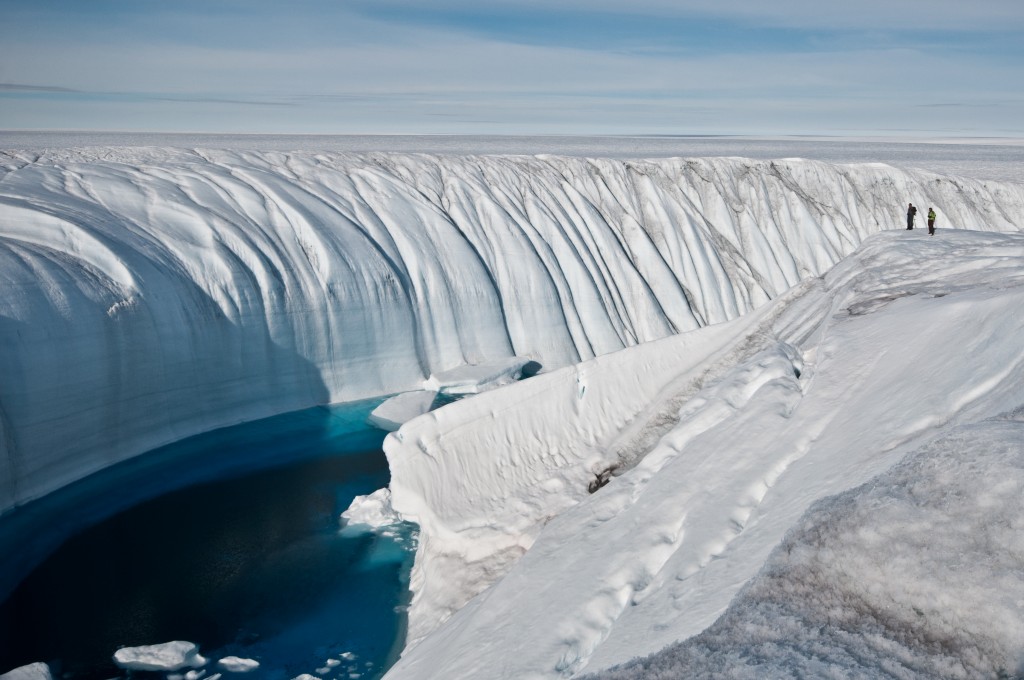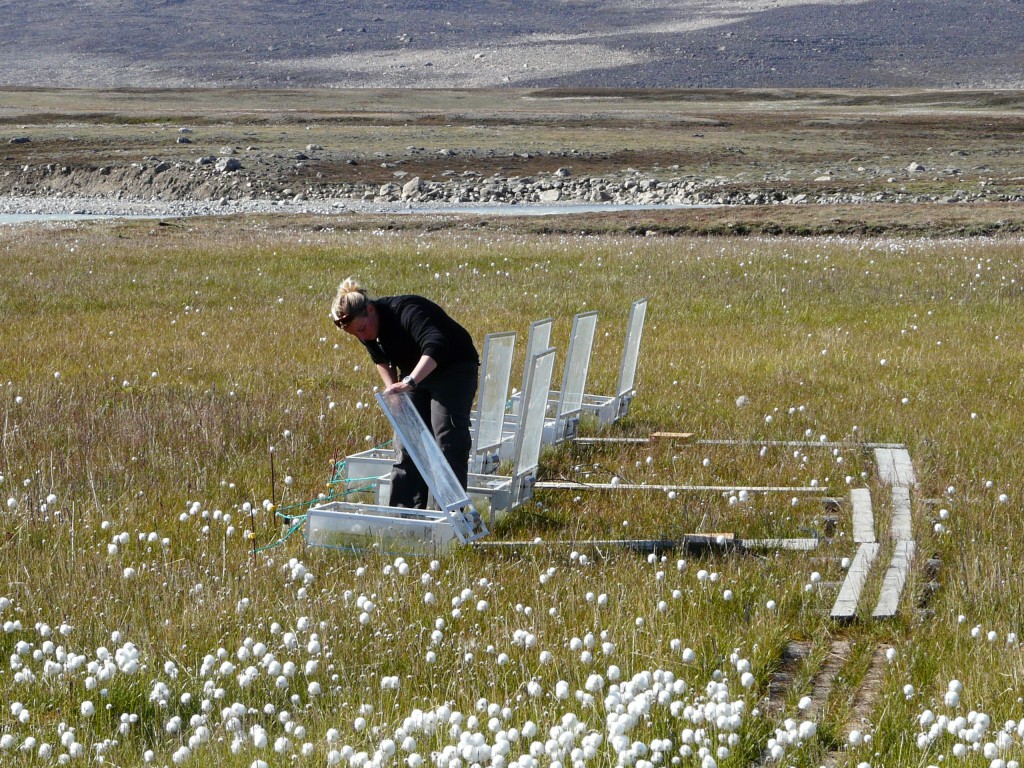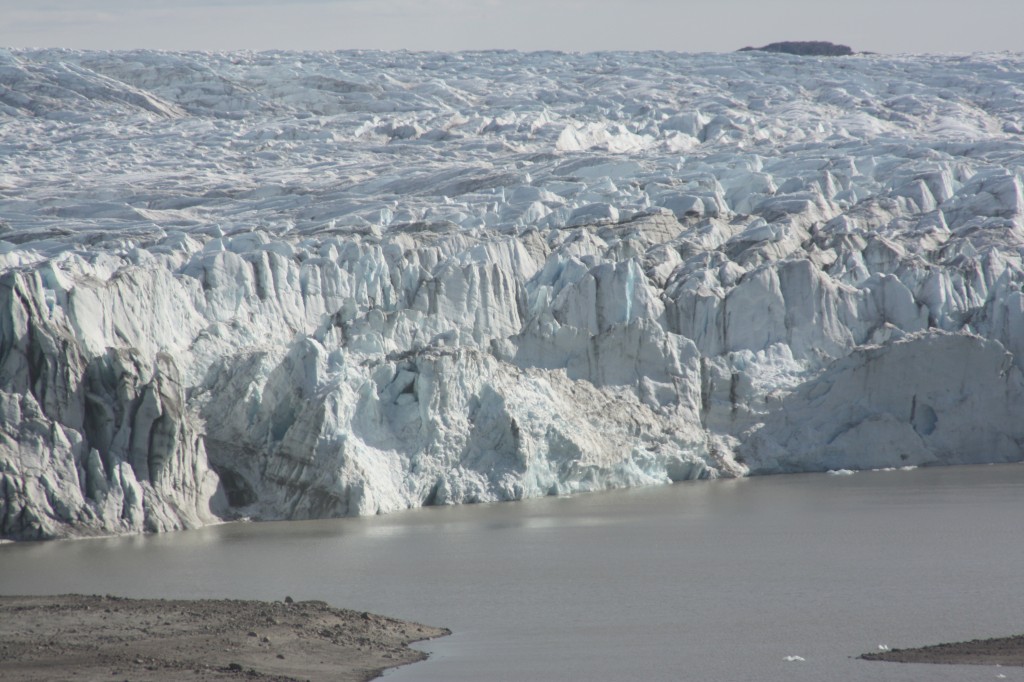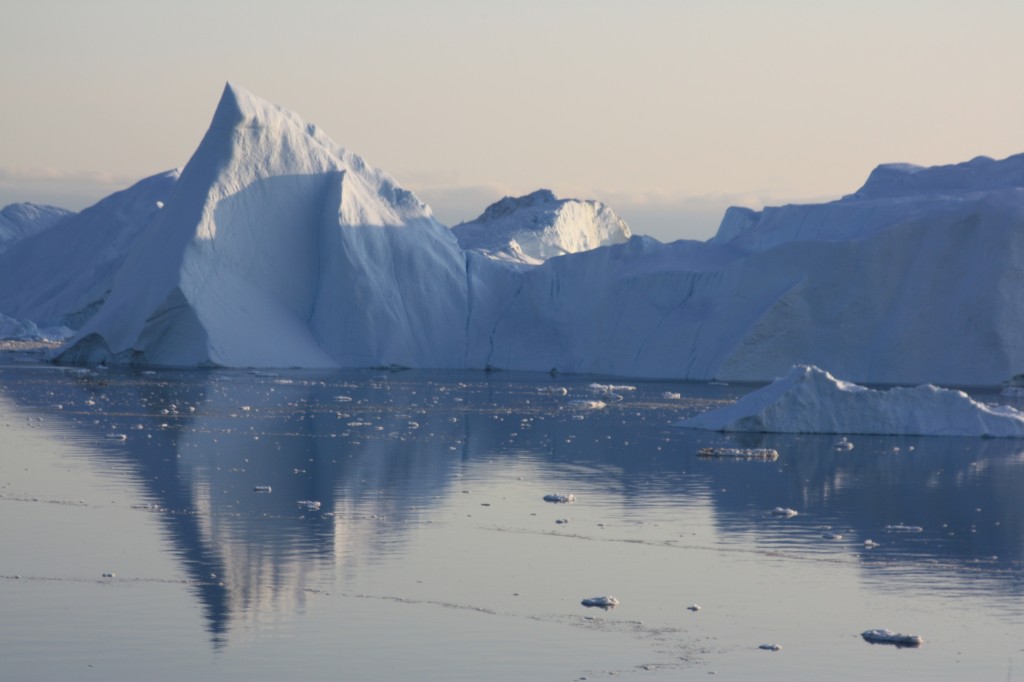Stop flying over the North Pole! (Exception: Reindeer-drawn sleighs)

Greenland melt stream photographed by Ian Joughin, a glaciologist in the University of Washington’s Applied Physics Laboratory
I have written a lot about the melting Arctic ice on the Ice Blog. This spectacular photo shows a channel carved into the Greenland ice sheet by melt water. It was taken by Ian Joughlin from the University of Washington, co-author of the study on melting polar ice (see Ice Blog post from 30.11.12) and lead author of an article on factors that cause ice sheets to lose mass. It goes without saying (almost) that we need to reduce emissions to halt the process. (Come on Doha negotiators). A new study has come up with an additional suggestion. Atmospheric scientist Mark Jacobsen and his colleagues suggest airlines could help slow Arctic melting by stopping international flights from crossing over the Arctic circle.
![]() read more
read more
Warming permafrost on the Doha agenda

Scientists at measuring stations like the one I visted at Zackenberg, Greenland, measure the amount of greenhouse gases emitted by melting permafrost.
I was glad to see UNEP making sure the melting permafrost issue gets some wider public attention by launching its first report on the status of the world’s permafrost regions in Doha while the international climate talks are in full swing. Climate change is having a major impact on the permanently frozen soil in the Arctic, Siberia and high mountain regions. In the UNEP study, an international team of experts explain what is happening and what potential risks this thaw has for countries with permafrost.
![]() read more
read more
The Cold Edge – Visualizing polar climate impacts

The Dragon - Dave Walsh - davewalshphoto.com
On board the Greenpeace boat Esperanza at Svalbard for a story on scientists monitoring ocean acidification in 2010, I met Dave Walsh from Ireland, who was on board as Greenpeace press officer. Since then I have discovered his work as a photographer in his own right. These photos are art and appeals for environmental and climate action at the same time. Ice blog followers will enjoy his polar photos, spectacular and somehow moving. “While the frozen regions of our planet have the power to ignite imaginations, for most of the seven billion people on Earth, the Arctic and Antarctic remain abstract and unreachable”, says Dave. “ I’ve been lucky enough to voyage north and south by ship, to experience the serenity of the oceans and polar regions – and realise how finite ourplanet is.”
“The Cold Edge” exhibition of Dave’s pictures opens at The Copper House Gallery in Dublin this evening. I wish I could be there. In the meantime, those of us who can’t be there in person can share some inspiration and (aesthetic) food for thought online. The British newspaper the Guardian also features the pictures.
Greenland ice melting in extra-warm Arctic season
Apologies for a lack of new posts over the last week. The ice blogger was offline “up north”, not quite in the Arctic, but on the Orkney isles, where pioneering companies are testing devices to turn the power of the sea into climate-friendly electricity. But more about that at a later stage.
The worrying news about Greenland and the Arctic has jumped to the top of the ice blog agenda. NASA images of the Greenland ice sheet have indicated that for a few days this month almost the entire surface of the “ice island” was melting. A giant iceberg also broke off the Petermann Glacier in Greenland.
This is part of an overall development in the Arctic, where the summer has been unusually warm. The US National Snow and Ice Data Center (NSIDC) says a large portion of the sea route between Western Europe and the Pacific has as little ice as it would normally have at the END of the summer melt.
This type of widespread surface melting is not unprecedented, according to the NSIDC.It might happen around every 150 years in Greenland. But the difference is that previous events of this sort happened around 7,000 years ago when the sun was tilted in such a way that it sent more sunshine to extreme northern latitudes. This time, there is no solar tilt to explain the melt.
Mark Serreze, director and senior research scientist at the NSIDC says Arctic sea ice is also at the extreme low end of the satellite record for this time on year and could be on track to equal the 2007 record, when the Arctic ice reached its smallest size in the satellite record. The sea ice is in a “sorry state”, he says, with holes appearing in satellite images much like a Swiss cheese. What next?
Titanic, Icebergs and a Warming Arctic
There’s a lot of media hype surrounding the 100th anniversary of the loss of the Titanic on April 15th 2012. It started so early, I was beginning to get tired of it – until I came across an article in the Vancouver Sun focussing on the fact that icebergs are still a danger in our high-tech age and that danger could increase rather than decrease as you might think at first, as the Arctic ice melts.
![]() read more
read more






















Feedback